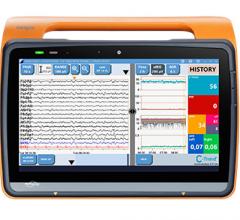May 21, 2008 - ICU patients are nearly one-third less likely to die, on average, when treated at hospitals using the VISICU's eICU telemedicine program, according to the results of a study released today.
Data from more than 185,000 patients treated in 2006-2007 at hospital intensive care units (ICUs) using VISICU's eICU technology show significant reductions in mortality rates. Both published data from individual hospitals, and an analysis of VISICU data collected from 156 hospitals nationwide, show that using advanced eICU technologies to link remote critical care specialists 24/7 with hospital ICU teams is a potential solution to the nation�s growing crisis in critical care.
Severity-adjusted hospital mortality rates over the two-year period were 9.6 percent for 185,464 patients at 156 hospitals with the eICU Program, compared to the national hospital mortality rate of 13.5 percent. VISICU said the 29 percent reduction in hospital mortality translates to 7,233 lives saved in this sample and provides evidence that hospitals using the VISICU eICU Program model are achieving improved patient outcomes.
The eICU Program uses advanced technology to connect ICU patients and their bedside care teams with remote centralized eICU Centers staffed by intensivists and nurses. The Leapfrog Group documented numerous studies that show intensivist staffing reduces the risk of ICU mortality by up to 40 percent, but less than a third of patients nationwide have access to these specialists.
Approximately 200 hospitals and 40 health systems nationwide currently serve more than 300,000 ICU patients each year through eICU centers located across 28 states. The eICU centers are operated by organizations ranging from academic medical centers to integrated community health systems. Using advanced eICU software and hardware, one intensivist physician and two critical care nurses can support up to 120 ICU beds at a time.
Sutter Health, a 27-hospital system based in Sacramento, CA, opened its first eICU Center in 2003 and a second in 2004. The two centers monitor more than 400 ICU beds at 24 hospitals across a wide geographic area in Northern California.
"Sutter Health's eICU Centers have assisted our ICU partners in reducing mortality through early identification and early treatment for specific diseases, such as sepsis," said Teresa Rincon, RN, nurse director for the Sutter Health Sierra Region eICU Center. "Studies suggest that sepsis kills over 500 people every day in the United States alone. Anyone who has an infection can develop this disease. Our eICU team provides an extra set of eyes on patients and additional expert guidance for treatment in a place where patients' lives depend on how fast we can provide appropriate care."
UMass Memorial Health Care, consisting of UMass Memorial Medical Center in Worcester, MA., and four community hospitals, has seen positive results from the eICU Center it established to cover its 112 ICU beds at three locations.
"To sustain the excellent care we already deliver in the ICU, hospitals nationwide are being encouraged to identify solutions to prepare for an aging population and ongoing shortage of intensivists," said UMass Memorial Health System Medical Director Craig Lilly, M.D. "It's not simply putting good providers at bedside or adding a camera, microphone and software to an ICU room - it's the combination of people and technology demonstrated by the striking success of the eICU program at UMass."
Recent research by Avera Health, a rural health system based in Sioux Falls, SD, that operates 233 facilities in five states, found that mortality dropped 29 percent and patient length of stay decreased up to 46 percent when comparing severity-adjusted data on mortality and length of stay from one year before and two years following implementation of their eICU Program.
"We calculated an annual reduction of 4,146 ICU days and 572 hospitals days for the four facilities we studied, which translates to millions of dollars saved to our system," said Avera McKennan Chief Medical Officer David Kapaska, M.D. "This improvement can be attributed to improved workflow, antibiotic protocols, glycemic control and avoidance of a range of complications - all made possible by the daily reports and best-practice guidelines provided to our clinical staff through the eICU Program."
For more information: www.visicu.com


 December 26, 2023
December 26, 2023 







